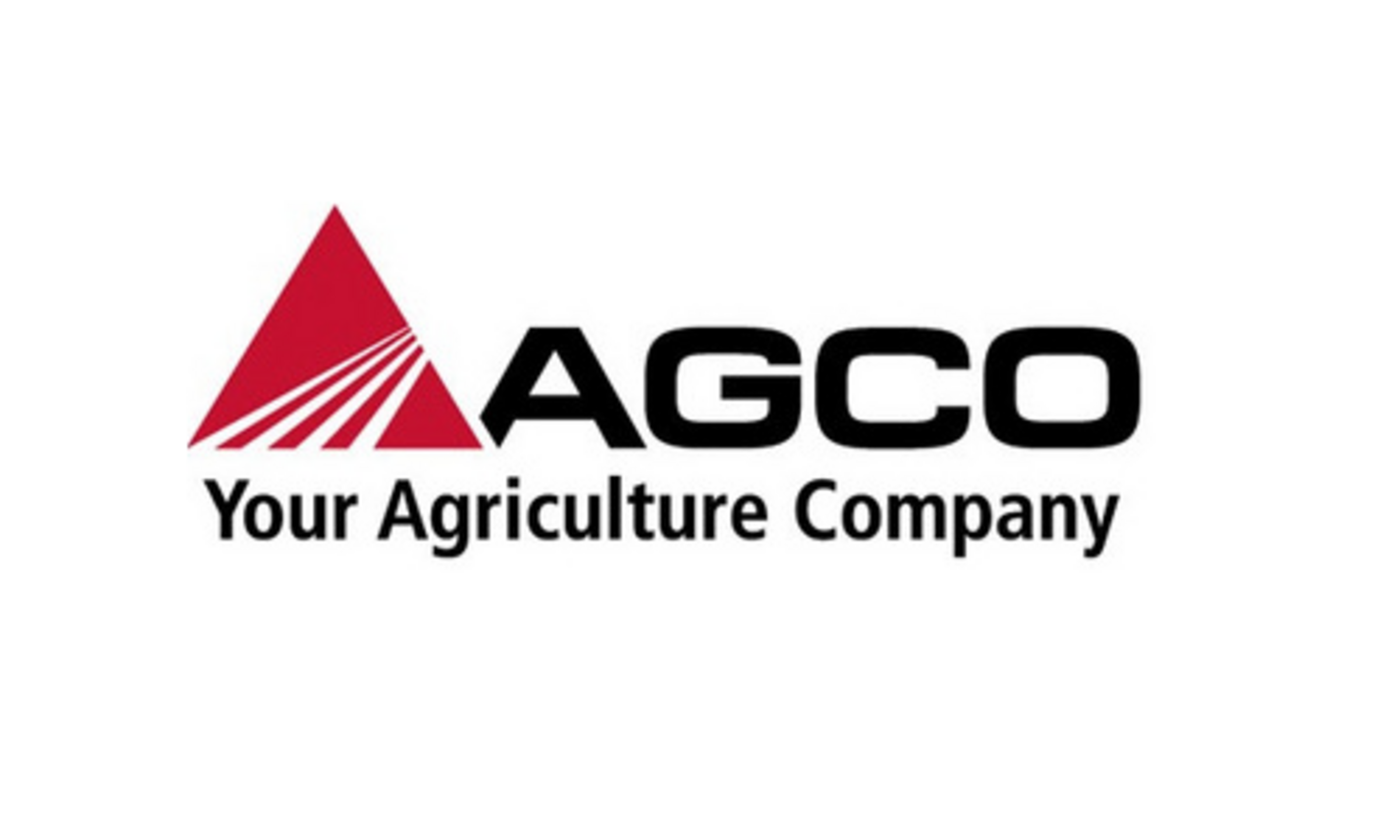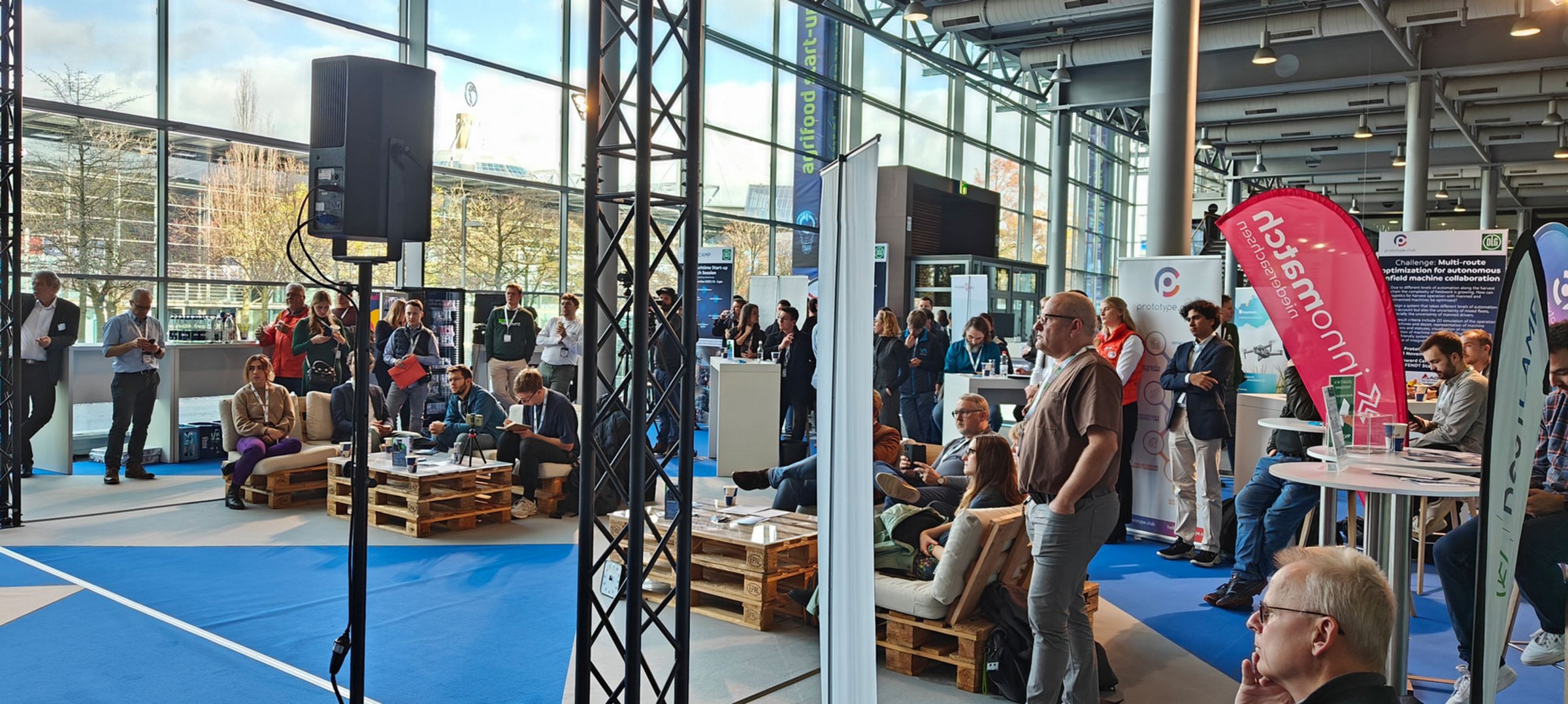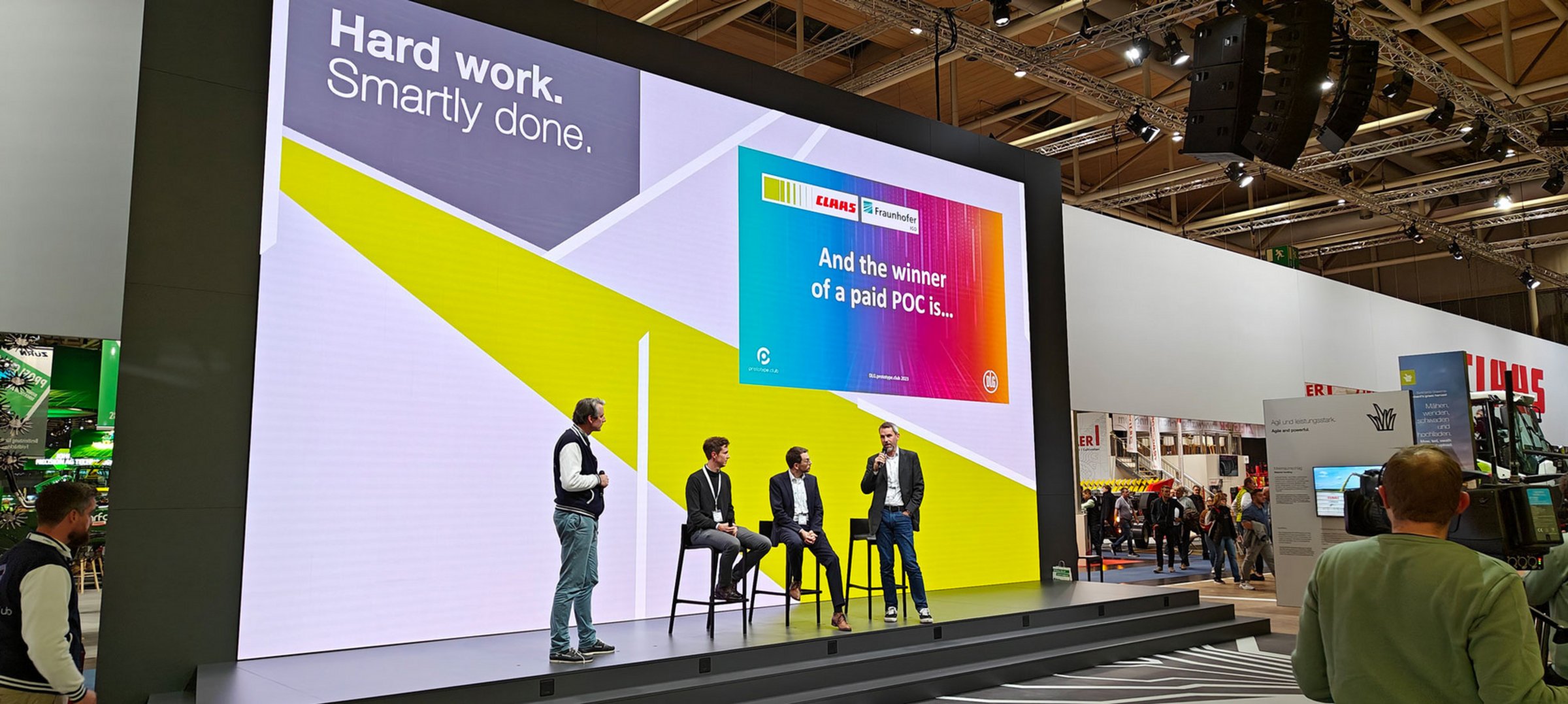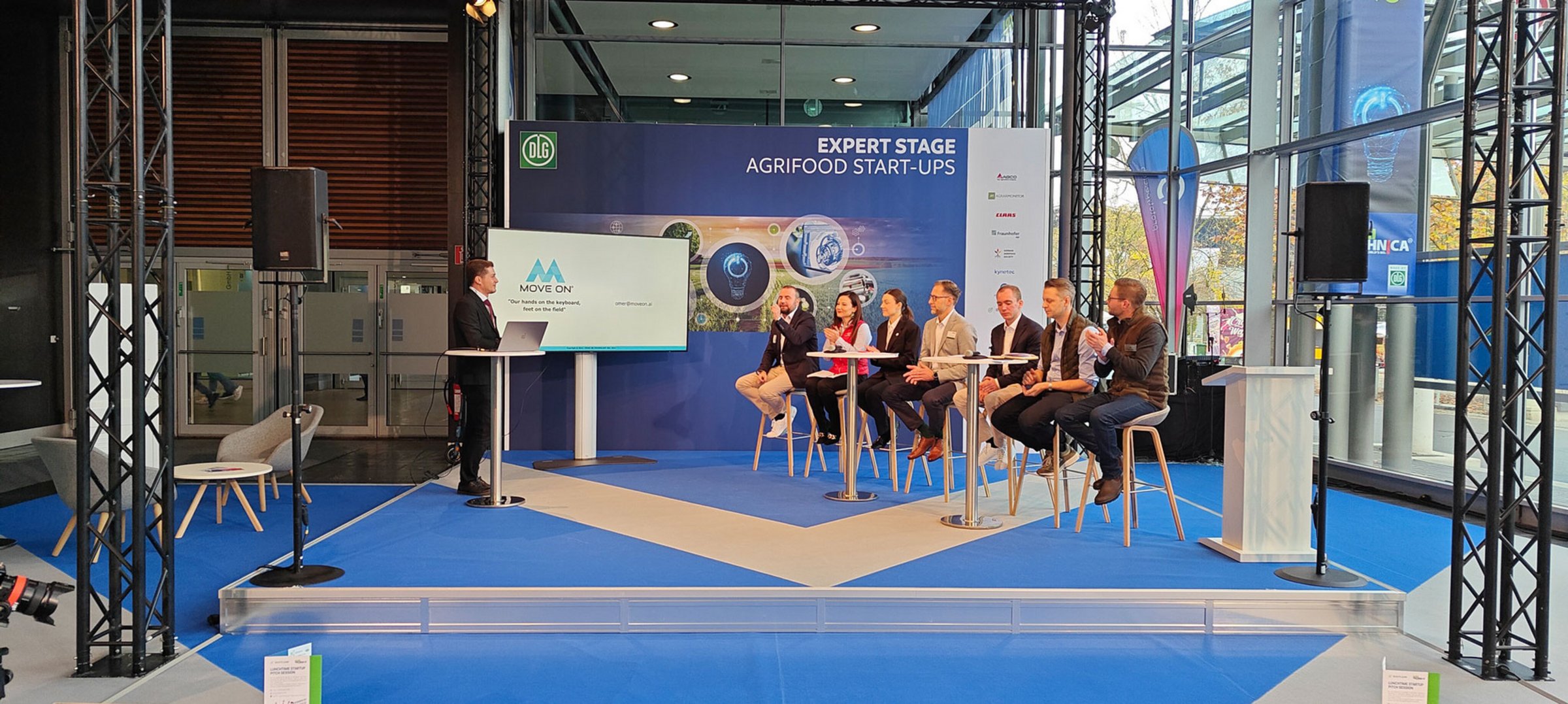
DLG.Prototype.Club
Challenge. Collaborate. Create.
Two challenges - over 40 scouted start-ups and software developer teams, 14 prototype demos and pitches on site - two winning teams with follow-up orders to further develop their prototypes with agricultural machinery pioneers CLAAS and AGCO.
That was the DLG.prototype.club at AGRITECHNICA 2023 in a nutshell.
The idea
Challenge
Exhibitors and partners of AGRITECHNICA name a challenge.
Teams
The DLG.Prototype.Club selects teams of software developers, engineers and start-ups to solve this challenge.
Rapid prototyping phase
The teams enter a rapid prototyping phase two weeks before AGRITECHNICA.
Live demonstration
The teams will present their fully functional prototype together with a business plan to the challenge partner LIVE during AGRITECHNICA.
Media campaign
The entire process, from the announcement of the challenge to the announcement of the winner, is accompanied by a high-profile media campaign.
The DLG.Prototoype.Club has brought together some of the best start-up talent and brilliant software engineers with AGCO and CLAAS to solve some of the biggest challenges in agricultural technology.
The teams of start-ups and software developers had a 14-day prototyping sprint before AGRITECHNICA and presented their working prototypes to the CLAAS and AGCO jury live at AGRITECHNICA 2023.
The campaign
Phase 1: Define challenge and team
Step 1
Selected partners address their digitalisation challenges in the form of a challenge.
Step 2
DLG.Prototype.Club identifies interdisciplinary teams and start-ups for participation in the competition.
Phase 2: Develop and present prototype (period of 14 days)
Step 3
Kick-off: The qualified teams receive their challenge and their access to the virtual working platform approx. 2 weeks before the fair.
Step 4
Processing time: Until the trade fair, the teams develop their functional prototypes in virtual space.
Step 5
Pitch: At the fair, the teams present their solution to a jury made up of your company (client) and other experts. At the same time, the teams develop business plans.
Step 6
Selection and award ceremony of the best teams at the trade fair. The further development of the product together with the industry partners can begin.
The Challenges 2023
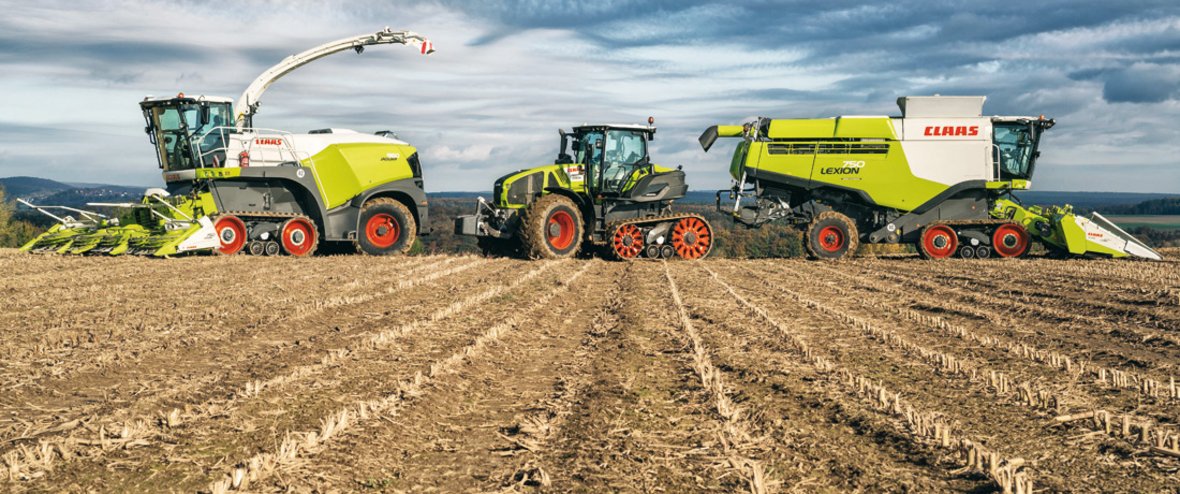
CLAAS & Fraunhofer IGD
The cab of tomorrow as an agricultural control centre (visualisation & interaction through UX/UI)
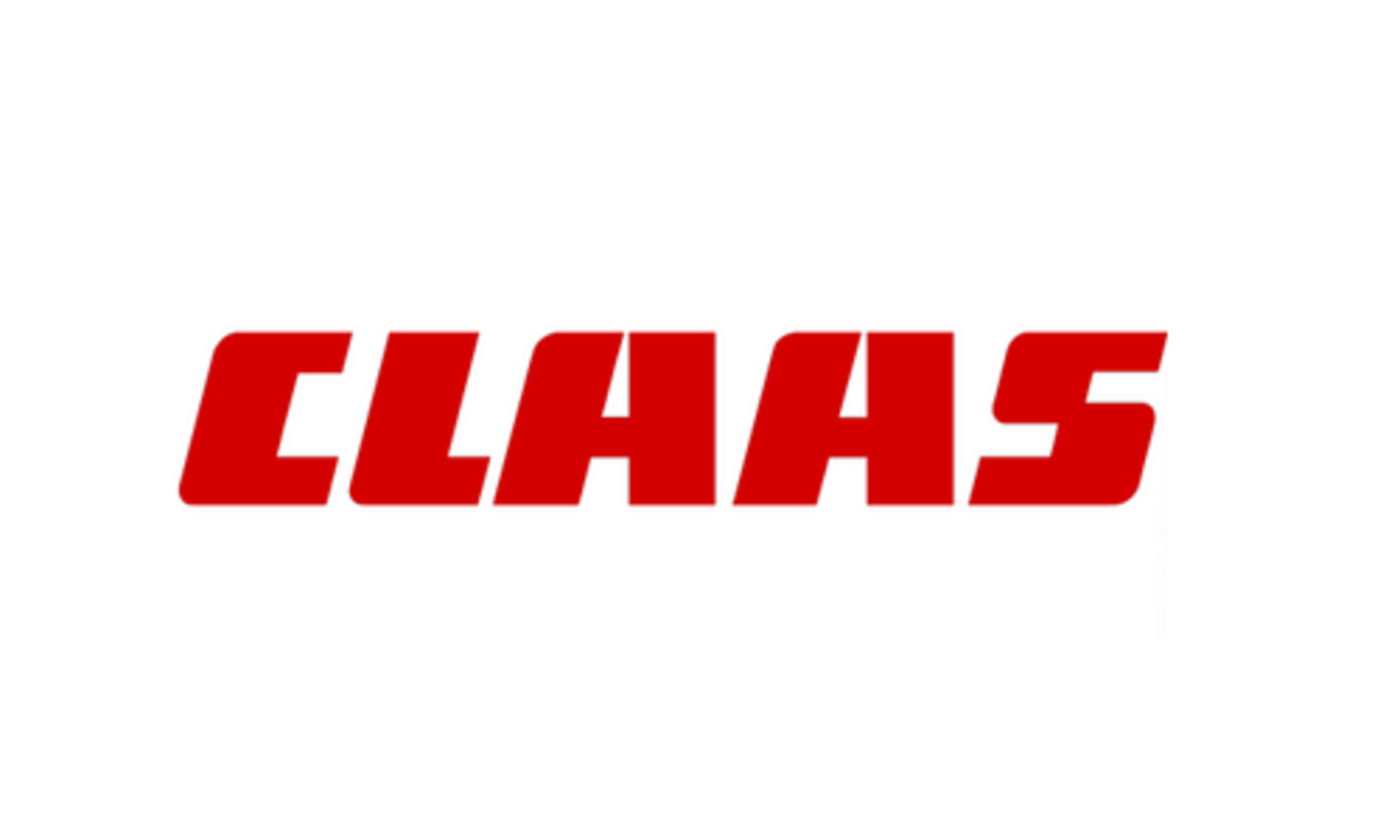
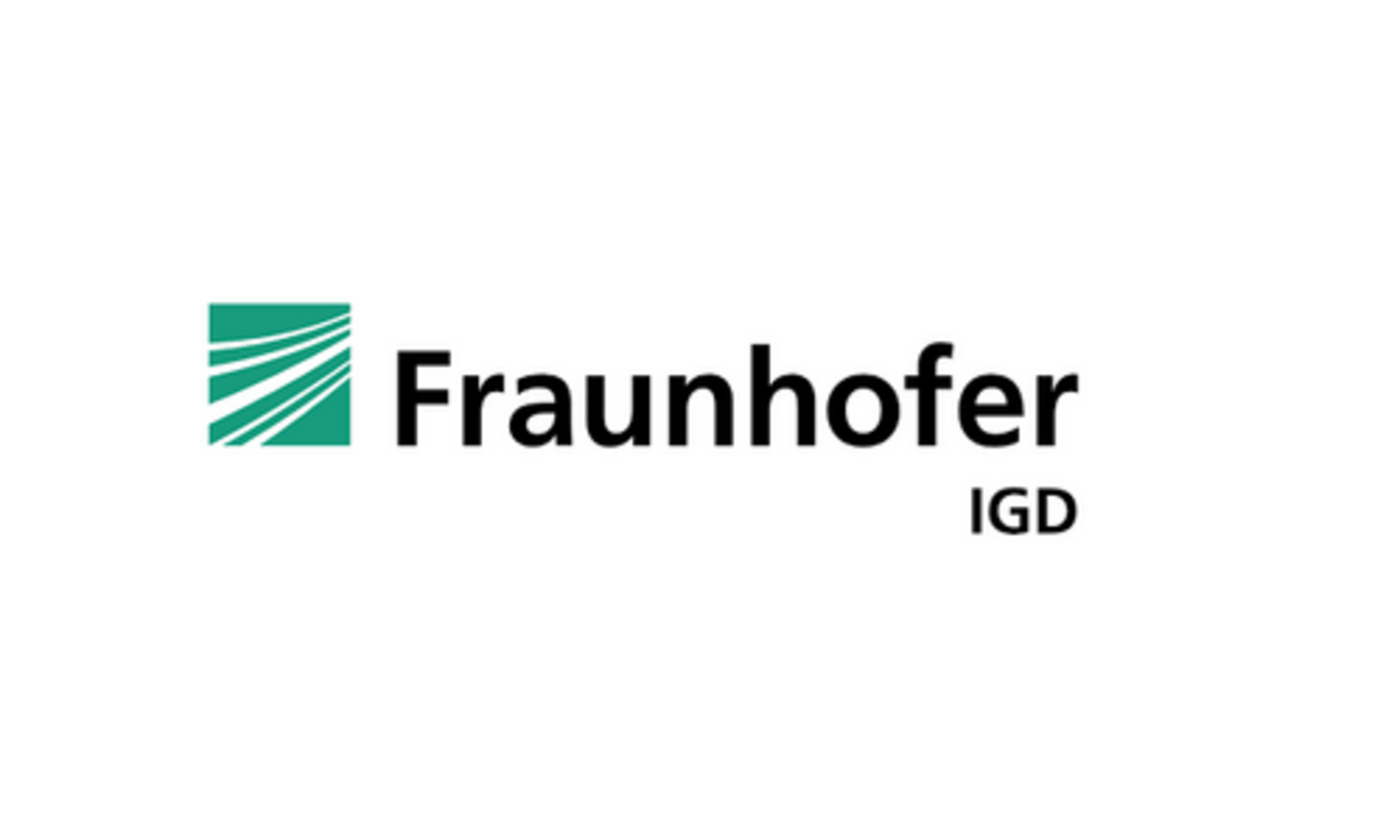
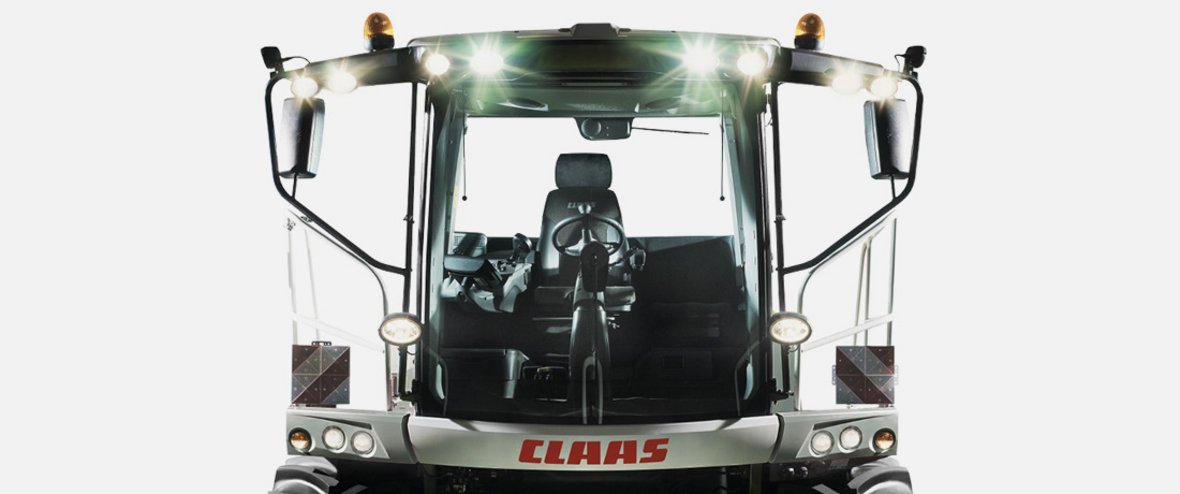
■ How can the driver visualise the (complex) processes and relevant information (e.g. obstacles or special plant features) in a clear form and how can he interact with them safely and quickly?
■ How can processes outside the cab (e.g. a fleet of field robots) be monitored and controlled - without losing control of your own machine?
■ What can a new form of human-machine interaction look like in this environment?
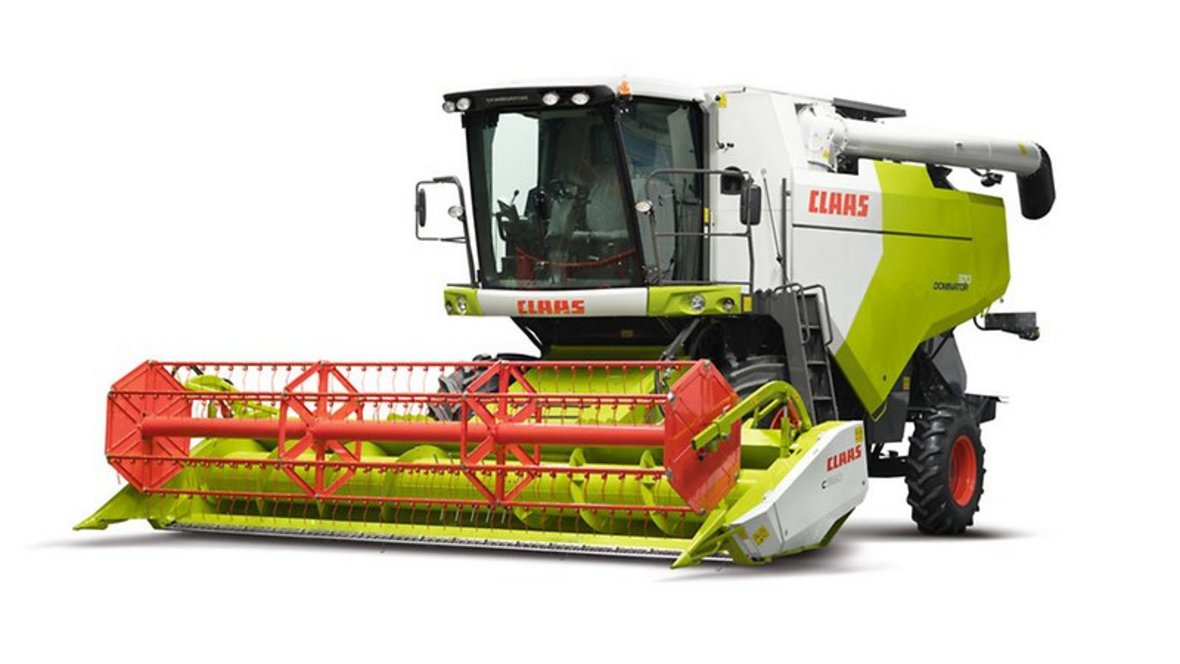
Background:
■ The work tasks of the machine operator are changing: The automated machine is taking over more and more classic operating tasks, and the operator is increasingly organising the processes around it (e.g. fleet management, farm management, private organisations). BUT: The farmer doesn't just want to sit in the office, he wants to be on site at the machine.
■ The cab must be a motivating, attractive and modern workplace in order to continue to attract qualified labour to agriculture.
■ Cameras and other sensor technologies generate information that can help to make better decisions in the field. The prerequisite for this is intuitive data visualisation. Autonomous field robots are set up and controlled via PC/tablet - a concept for integration into an intelligent cab does not yet exist.
Objective:
Ongoing prototype or functional mockup
First prize (award):
The further development of the PoC is financed by CLAAS

AGCO
Multi-route optimisation for autonomous collaboration of machines in the field
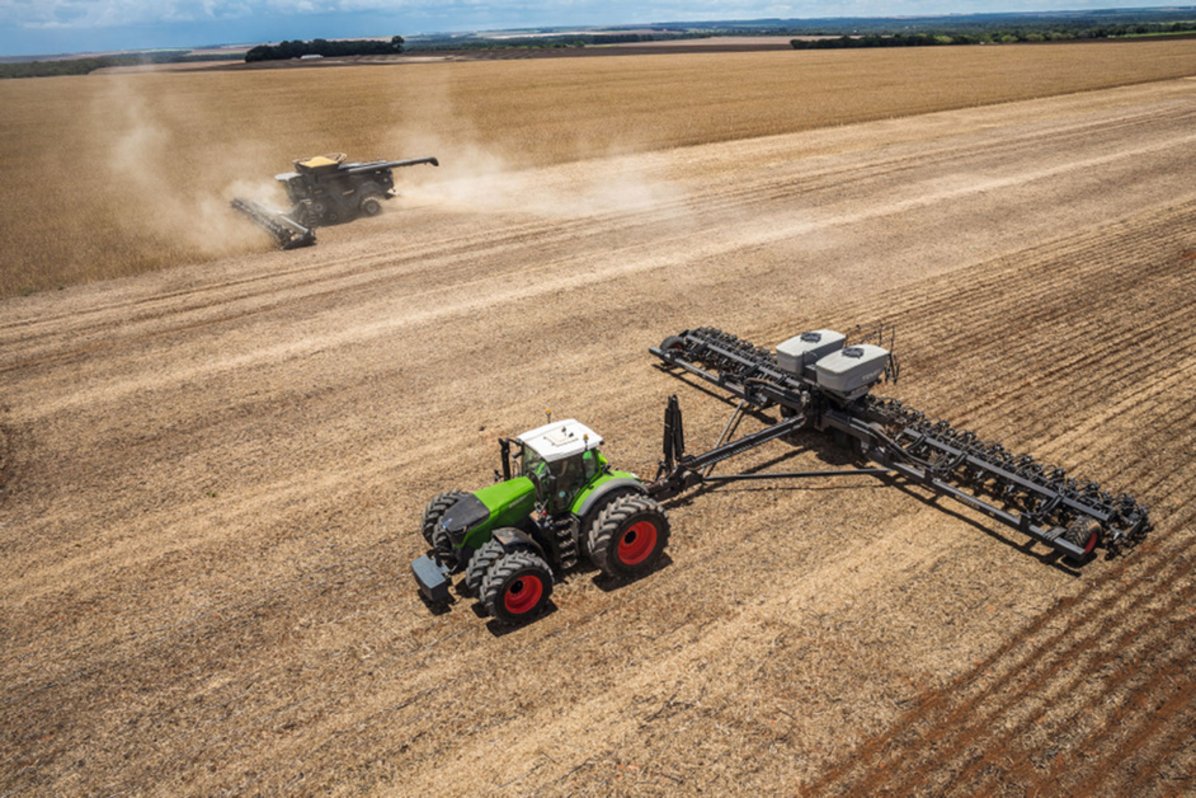
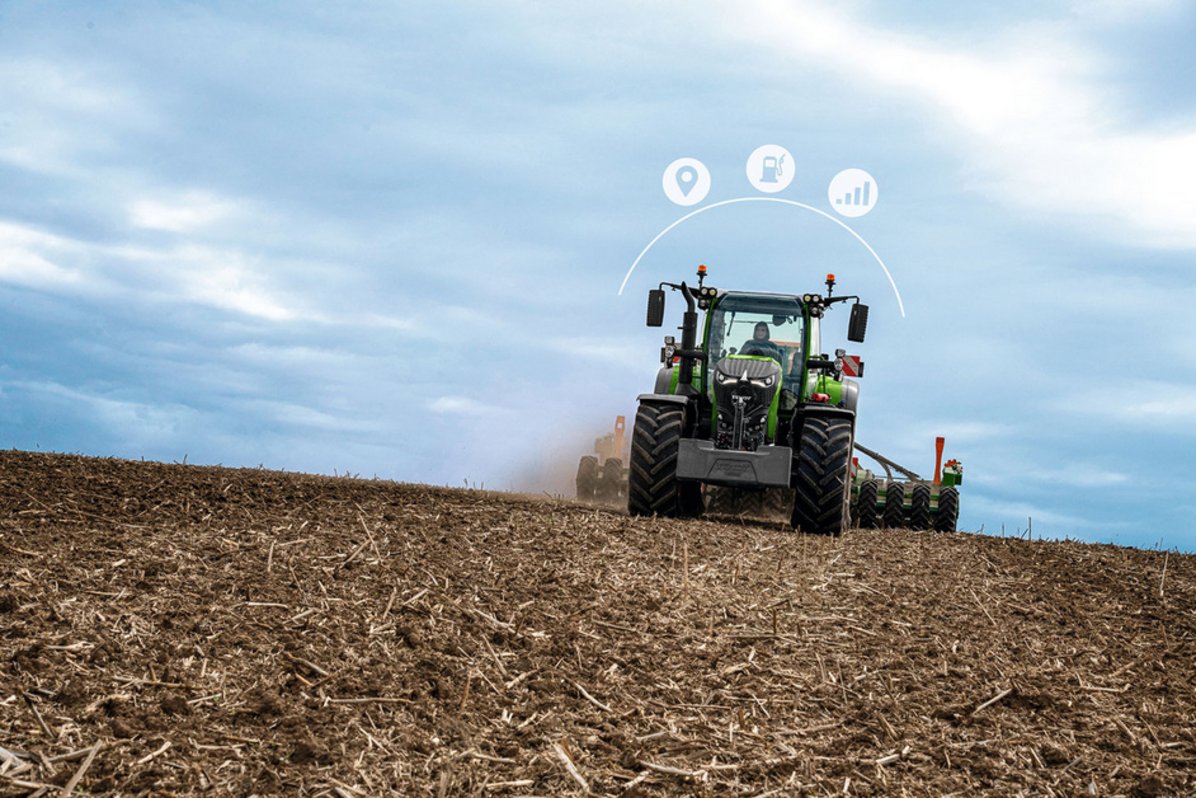
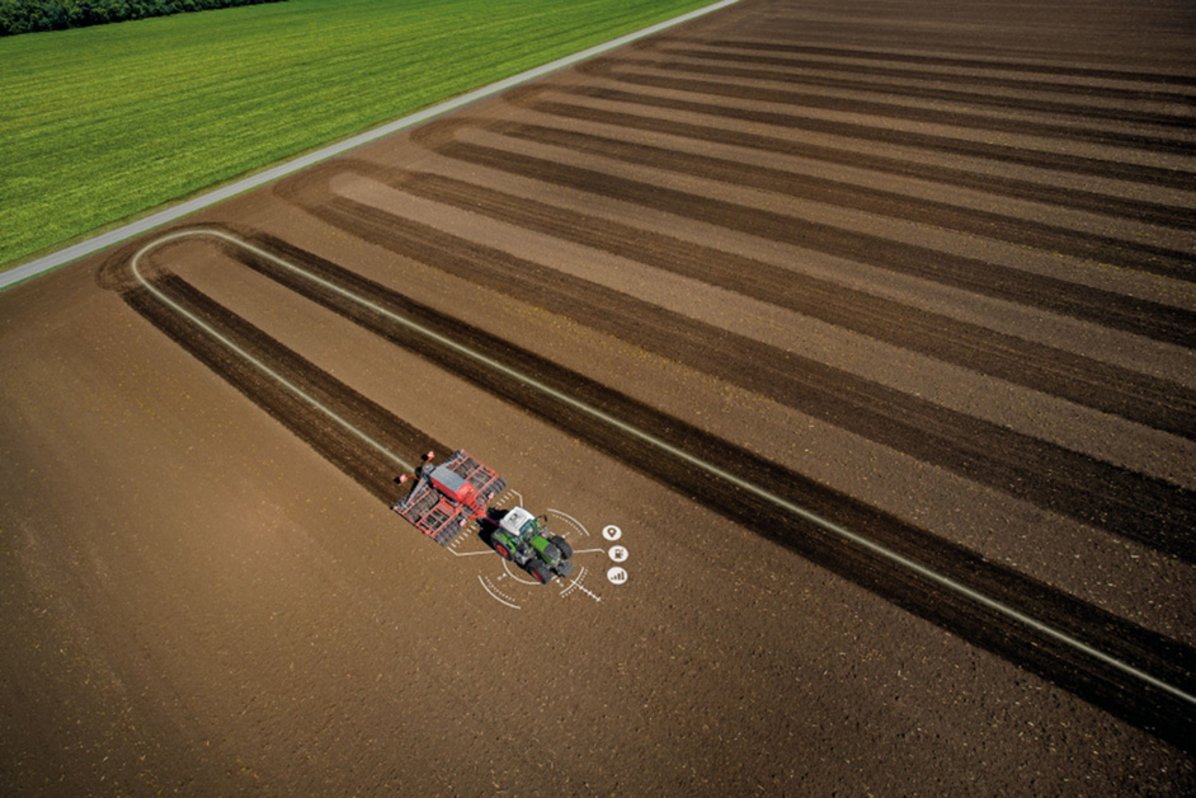
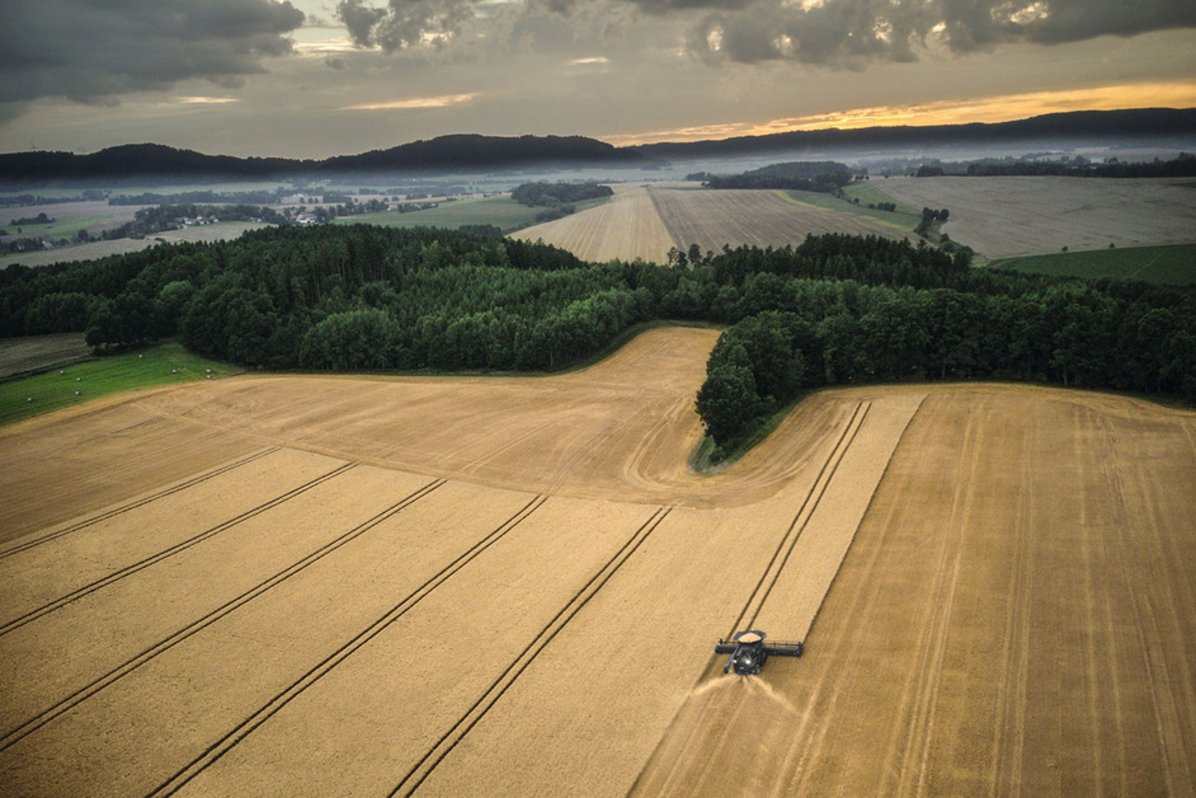
Background:
- The narrow "harvest window" of field work presents farmers with the need to carry out their work as efficiently as possible across the entire harvest chain (warehouse, road, field).
- Complications arise when multiple machines and people are working on and off the field, as current systems do not support cross-machine communication and planning.
Challenge:
- Develop a multi-route planning algorithm that adapts to the different levels of automation along the harvesting chain.
- Optimisation of the entire operation in terms of efficiency (fastest), economy (cheapest) and environmental impact in relation to the route and the machines required
- Creation of a 2D simulation to visualise the entire operation of the machines and the depot to illustrate the functionality of the algorithm.
- To visualise how the farm manager, combine harvester driver and tractor driver can interact with the system.
Objective:
- A system that optimises the movements of the numerous machines, both autonomous and human-controlled, involved in the entire harvesting process (depot, road, fields) and reduces risks due to unforeseen human behaviour and decisions. A simulation of the harvesting process will illustrate the algorithm developed.
Price:
- Paid PoC for 100 days (3 months)
The winners 2023
Innovative ideas & happy winners
Not only the winners Lumos.ac (CLAAS x Fraunhofer IGD) and OmegaLambdaTec (AGCO) have benefited from this experience. All participants in the challenges are inspired and full of motivation to continue on their path. The challenge partners were also impressed by the large number of great innovations and signalled their willingness to work with the start-ups in the future.
An excellent opportunity to make contacts, exchange ideas with like-minded people and actively help shape the future of agriculture!
Lumos.ac - Concept for the cockpit of the future
Partners
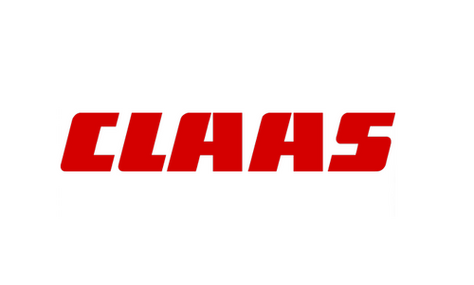
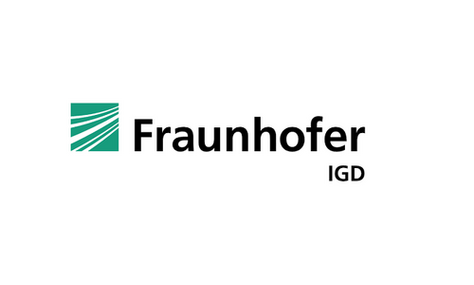
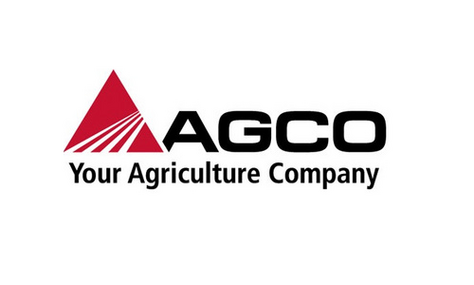

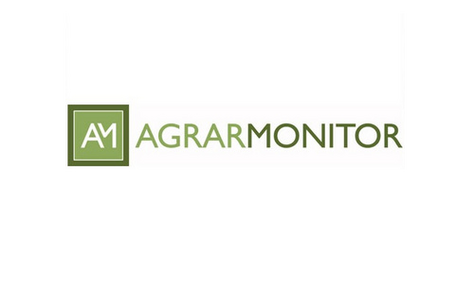
Contact
Christopher Armstrong
+49 69 24788-455 • [email protected]

